AMD Kaveri Review: A8-7600 and A10-7850K Tested
by Ian Cutress & Rahul Garg on January 14, 2014 8:00 AM ESTProcessor Graphics: Compute and Synthetics
Our GPU Compute tests are designed to stress the integrated graphics of the system using old and new GPU tools. This is where the benefits of Kaveri should come in – if a benchmark is programmed to take advantage of the GCN architecture then the relevant speed up should be observed. In none of the GCN benefits have any use then we are relying on pure grunt to get the top scores.
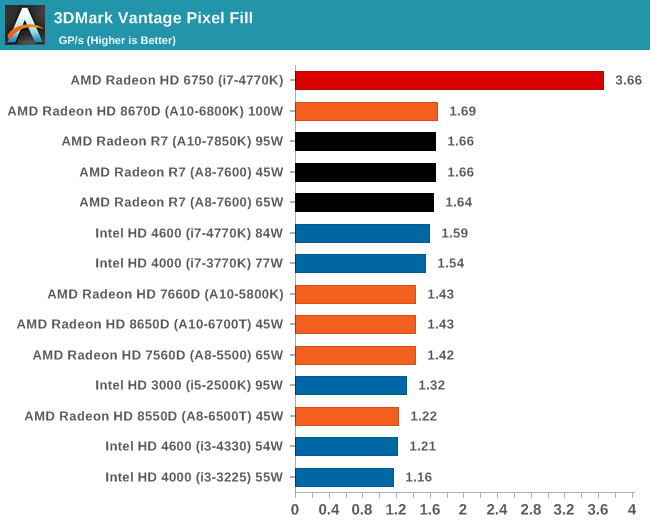

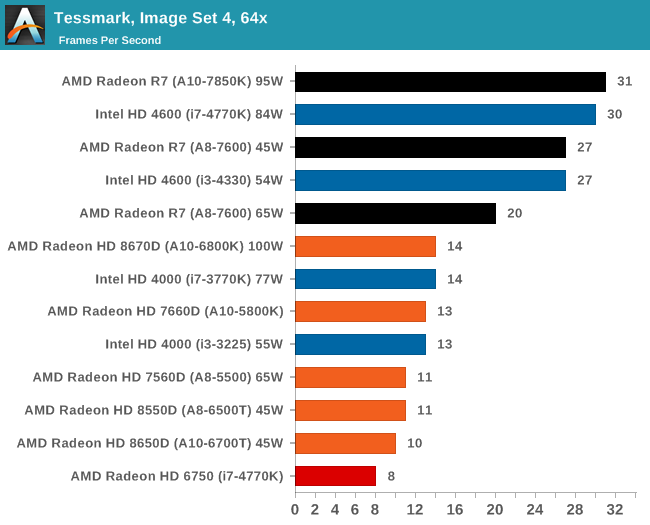
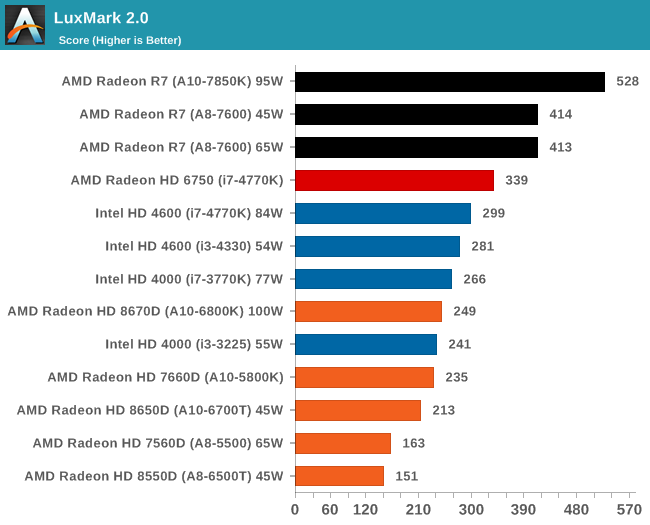
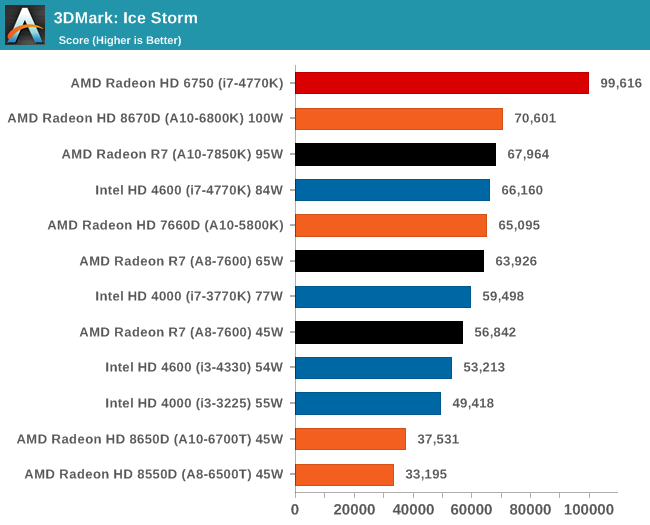
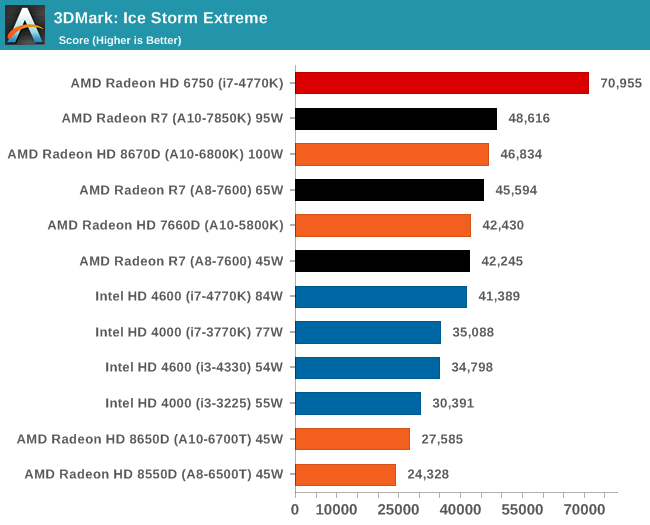


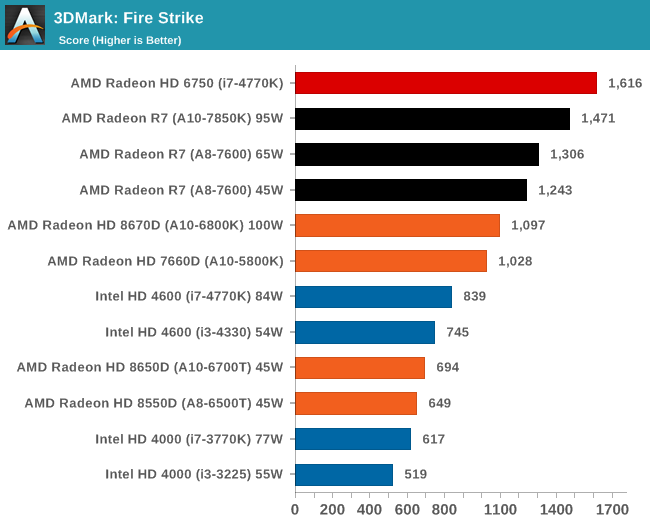
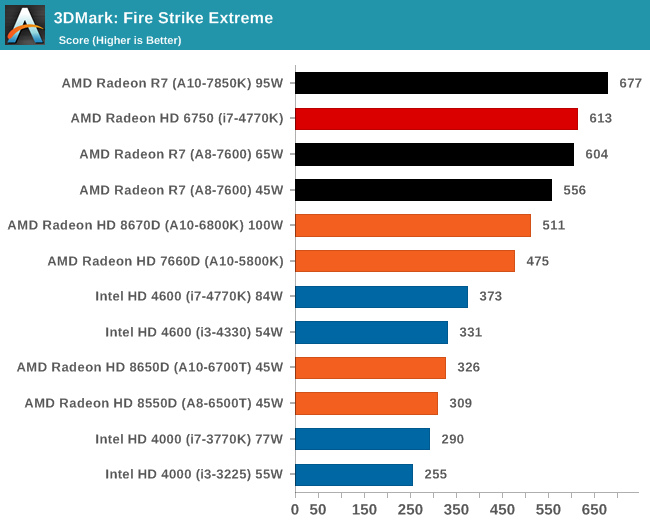

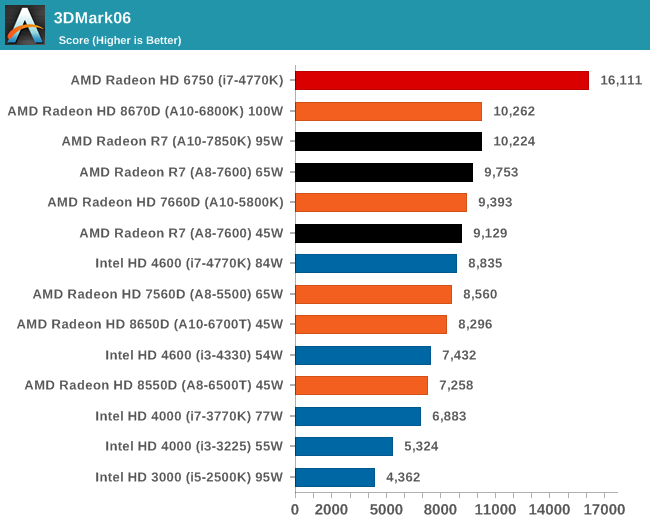
CompuBench CL Fluid GPU + Computer Vision GPU
CompuBench CL is an OpenCL compute benchmark designed to test some common in-use algorithms. Due to the way it is designed, any OpenCL compatible device can run the benchmarks, and as such we have run both the Fluid Dynamics and Computer Vision portions on the CPU and integrated graphics on each processor we have tested. Here are the GPU results.

GCN really wins out here, showcasing how important OpenCL compliance can be to extract potential compute.










380 Comments
View All Comments
dbcoopernz - Tuesday, January 14, 2014 - link
I'd like an APU with enough GPU power to run all the high quality options in MadVR. Would make a very nice HTPC chip.thomascheng - Tuesday, January 14, 2014 - link
I think Mantle can make that happen, but will see how much support they get.MrSpadge - Tuesday, January 14, 2014 - link
Mantle has nothing to do with GP-GPU, that's not using DirectX anyway.JDG1980 - Tuesday, January 14, 2014 - link
My discrete 7750 couldn't handle Jinc scaling in MadVR (at least not without dropping frames on some 1080i test clips), so this is going to be another generation or two in the future.The PS4 APU could probably do it, if that was available in a generic PC form factor.
MrSpadge - Tuesday, January 14, 2014 - link
Add to that DDR4 and/or 4 memory channels, or at least a large on-package buffer like Crystal Well.yankeeDDL - Wednesday, January 15, 2014 - link
But the whole point of HSA is to get the GPU to do CPU work that it could do better (like FP).So you wouldn't need more CPU cores at all.
Look at it this way: AMD's CPU is less efficient than Intel's, while the GPU is more efficient.
Having a CPU-imbalanced APU, would put it in a tough(er) spot to compete against Intel. A GPU imbalanced, as Kaveri is, would improve the lead than it already has on the GPU side.
Now imagine that HSA kicks in, and the GPU lead translates directly in CPU lead ...
mikato - Wednesday, January 15, 2014 - link
This is true. I hope we see more articles as adoption of HSA starts to take hold.It is too bad they are far behind in CPU power, but AMD has the right strategy. Either way, some things are better done on the GPU. AMD just has more benefit than Intel to get things moving that way sooner with their GPU advantage and CPU disadvantage. Intel will have no choice but to follow that lead.
nissangtr786 - Tuesday, January 14, 2014 - link
http://www.extremetech.com/computing/174632-amd-ka...hsa does well on amd main thing they marketed in libreoffice.
Ryan Smith - Tuesday, January 14, 2014 - link
I'm normally not one to speak about other articles, but those are all OpenCL benchmarks. The OpenCL HSA driver won't be released for another quarter. And the HSA SDK is similarly far off.http://www.anandtech.com/show/7677/amd-kaveri-revi...
krumme - Tuesday, January 14, 2014 - link
What a bencmark of a review. I learned a lot. Great. Thanx.